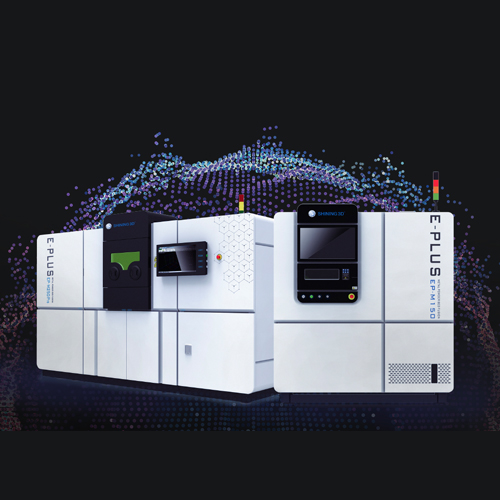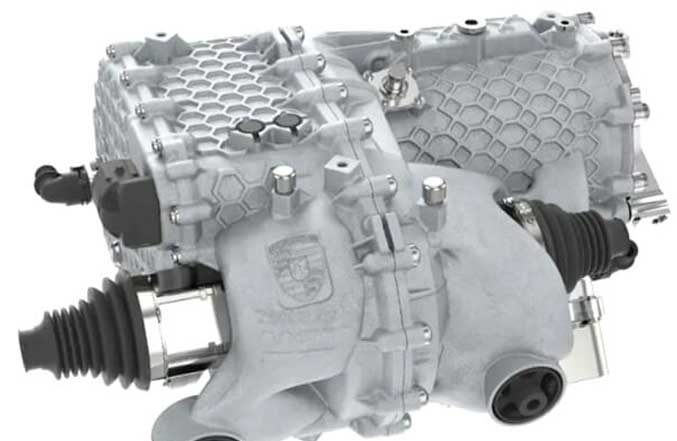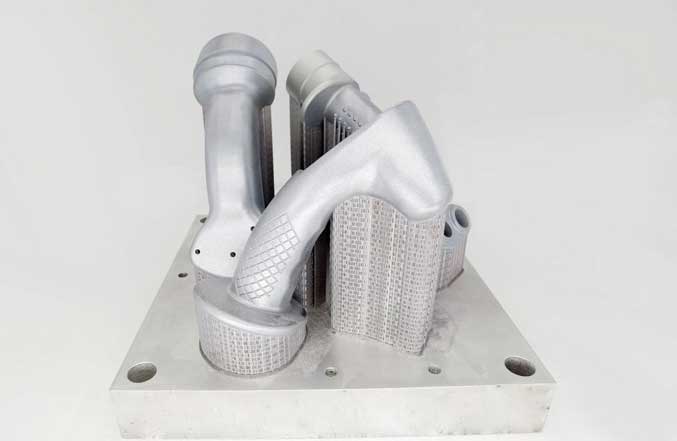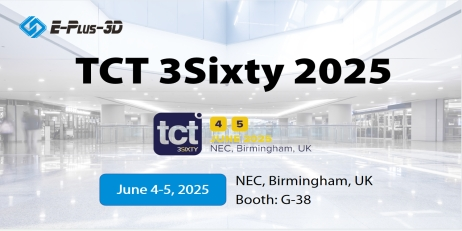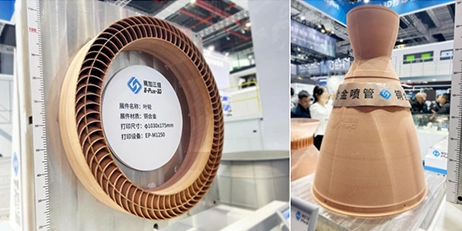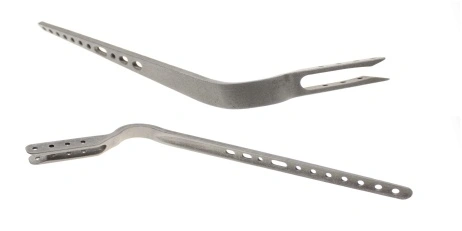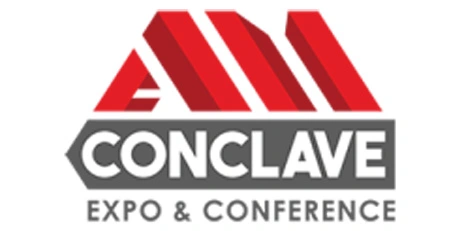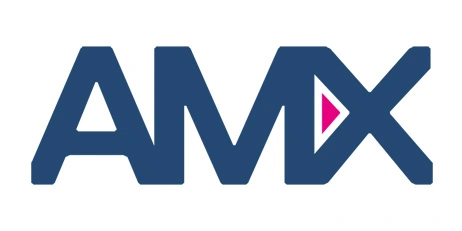Metal Additive Manufacturing Technology
Metal additive manufacturing refers to the technology that produces 3D parts layer by layer using metal powders. This process enables production of complex structure of industrial parts which would be otherwise impossible to manufacture through traditional methods. Eplus3D provides advancing metal 3D printing solutions to bring higher productivity, product quality and working efficiency for enterprises as well as small businesses.
Applications for Different Industries
The continuing development of metal addictive manufacturing has extended its applications in a wide range of industries including aerospace, automotive, tooling, healthcare, dental, consumer products, education, and more.
Applications for metal additive manufacturing including parts production, rapid prototyping, jigs and fixture, product customization, injection molding, medical devices, and etc.
The following examples demonstrate some of these metal 3D printing applications in different industrials.
Sheet metal manufacturing is widely used in industries like electrics and electronics, automotive, telecom, medical and others. Sheet metal is the skeleton supporting and shaping the products like an autobody, computer or cellphone.
The design and manufacture of sheet metal parts become a key step of new product development with trend of diverse but low-volume production.
The conventional sheet metal manufacturing process adopts punching die for production. Take automotive sheet metal parts as an example, the forming process is carried out by punching die, cutting die, forming die, separating die, pressing die, bending punch etc. The tooling process to produce a new die is expensive and time consuming, not suitable for the rapid production of sheet metal parts in small series.
Regarding small-batch sheet metal part production, many sheet metal factories have adopted laser cutting combined with CNC bending technology. Compared with conventional punching die forming process, this method does not need tooling process, which is cost saving and short-cycle for rapid manufacture of simple-structure sheet metal.

Block workpiece bending
Block workpiece bending
However, laser cutting can only be used for shaping, hole cutting, while bending can only be used for plane structures. This technique does not work for the production of specially shaped sheets with curved surfaces or concave-convex surfaces.
Flexible small batch production of car seat sheet metal parts
A car seat manufacturing company from China, specializing in the development, manufacture and sale of car seats has become the main contractor of car factories such as Chang’an, Geely, Ford, and Great Wall. They are going to demonstrate some new car seat solutions in one week, but the tools for the core sheet metal parts are still in progress, so sheet metal parts cannot be produced.

Design drawing of sheet metal parts
Design drawing of sheet metal parts
This car seat sheet set consists of 78 parts, which have a thickness of 1.5 – 2.5 mm. Most parts have ribs and concave-convex structures. Therefore the parts can not be formed by laser cutting plus CNC-bending. Limited by the CNC-cutter, some corner areas can also not be fully restored to the original design, which was made with a milling machine. Incidentally, milling itself is not a very efficient process to produce the parts.
Eplus3D, assigning the challenge task to one of it’s professional 3D printing service center based in Chongqing, China, which is specialized on metal, proposed a 3D printing solution for the above-mentioned production of sheet metal for car seats. After data analysis, 316L stainless steel was selected as production material and grinding was used for polishing the surface. Within only 7 days, the complete seat sheet metal parts were delivered, produced by 3 units of Eplus3D Metal Printer EP-M250, whom perfectly recreate the original design.

3D printed sheet metal parts
Based on the above case, 3D metal printing, Flexible sheet metal manufacturing and other low-volume sheet metal manufacturing technologies are compared as follows:

Comaprison 3D metal printing, Flexible sheet metal manufacturing and other low-volume sheet metal manufacturing technologies
Let’s check out another case to have a more comprehensive knowledge of the metal 3D printing for flexible production.
One of the machine manufacturers wants to produce a silencer consisting of four components with a uniform shell thickness of 0.73 mm and a uniform thickness of 0.6 mm for the medium structural area.

silencer
The sheet metal structure of the four silencer components is complex. It cannot be produced by cutting and bending. The thin wall thickness makes it impossible to produce it by milling. There are only two options available. One is punching, the other one is 3D printing.
· Parts produced by punching tools have a high degree of accuracy and a high degree of restoration of the original design. But this requires punching tools that are very time consuming and expensive in production.
· With the benefits of metal 3D printing, it takes only 3 days from data processing to product delivery and the design details are fully represented.
Finally, this customer choose Eplus3D Chongqing 3d printing service center to finish the task. The metal sheet that 3d printed by Eplus3D EP-M250 can reach the dimension accuracy at 0.1mm. More and more cases are proving that the 3d printing technology can keep the parts in good quality and greatly reduce the product cost and shorten the lead-time meantime.
Industry Expectation
Sheet Metal Manufacturing is one of the fastest growing industries in the world. Obviously, flexible production in sheet metal manufacturing is the trend driven by product diversity and the increasing demand for small series. More and more sheet metal processing companies are benefiting from Additive Manufacturing technology, creating more value for their customers, such as the reduction of assemble steps, great design freedom and the minimization of time and costs.
EP-M250 Pro
Dual-laser 3D Printer (Metal Powder Bed Fusion)
EP-M250 Pro
The EP-M250 Pro is a dual-laser metal 3D printer that uses advanced metal powder bed fusion (MPBF) technology. It is capable of easily and quickly converting CAD data into high-performance, complex structure metal parts. The 3D printer is ideal for medium sized parts and small batch production.

























